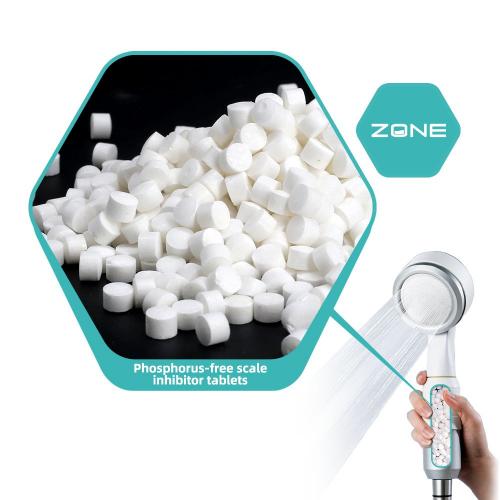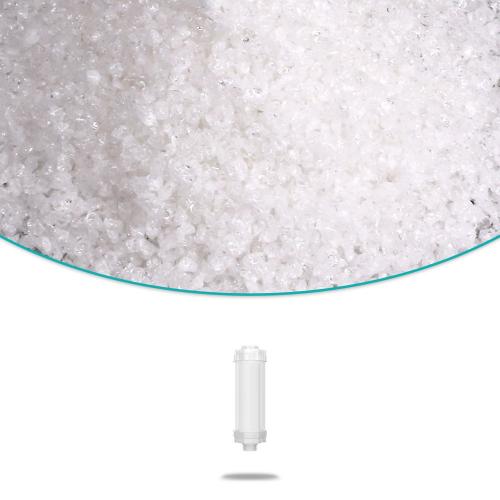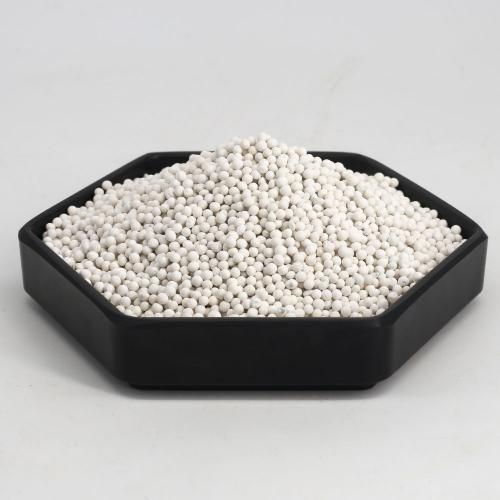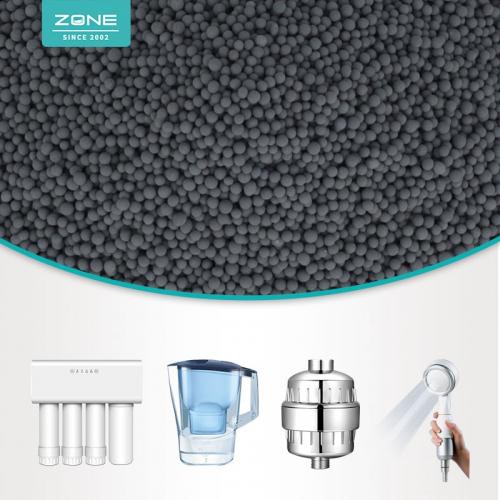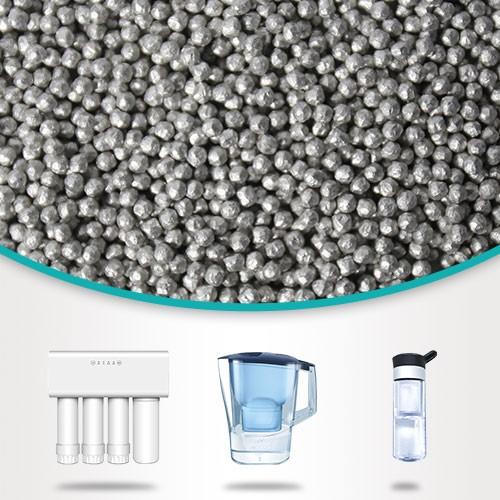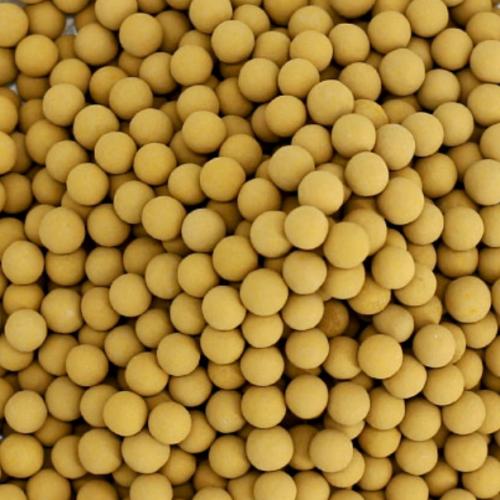180 commonly used terminology for water treatment(chemical water treatment)
Update time: 23-01-31 Views: 1427
180 commonly used terminology for water treatment(chemical water treatment)
By Zhao from Onlyzone,a manufacturer of water treatment bio ceramic ball filter media in China.
Professional terminology of water treatment, involving chemical water treatment, circulating water treatment, sewage treatment and other water treatment fields, the analysis of 180 water treatment professional names compiled by the author through years of water treatment work experience.
1. Surface water: refers to the water that exists on the surface of the earth's crust and is exposed to the atmosphere. It is a general term for four water bodies: rivers, glaciers, lakes, and swamps. It is also called "land water".
2. Groundwater: It is the water stored in the stratum voids below the vadose zone (the vadose zone refers to the geological medium below the earth's surface and above the water table), including rock pores, cracks and caves. Groundwater exists in cracks in crustal rocks or in soil voids.
3. Raw water: refers to the water collected in nature, including but not limited to groundwater, reservoir water and other water sources that can be seen in nature, without any artificial purification treatment.
4. PH: The value indicating the pH of the solution, pH=-lg[H+] is the negative value of the common logarithm of the hydrogen ion concentration contained.
5. Total alkalinity: the total amount of substances that can neutralize strong acids in water. Such substances include strong bases, weak bases, strong bases and weak salts, and the like.
6. Phenolphthalein Alkalinity: It is the alkalinity measured by using phenolphthalein as indicator (titration endpoint pH=8.2~8.4).
7. Methyl orange alkalinity: It is the alkalinity measured with methyl orange as indicator (titration endpoint pH=3.1~4.4).
8. Total acidity: Acidity refers to the total amount of substances in water that can neutralize strong bases, including inorganic acids, organic acids, salts of strong acids and weak bases, etc.
9. Total hardness: In general natural water, it is mainly Ca2+ and Mg2+, and the content of other ions is very small. Usually, the total content of Ca2+ and Mg2+ in water is called the total hardness of water.
10. Temporary hardness: The hardness formed by Ca(HCO3)2 and Mg(HCO3)2 in water can be removed after boiling. This hardness is called carbonate hardness, also known as temporary hardness.
11. Permanent hardness: The hardness formed due to salt substances such as CaSO4 (CaCl2) and MgSO4 (MgCl2) in water cannot be removed after boiling. This hardness is called non-carbonate hardness, also known as permanent hardness.
12. Dissolved substances: exist in water (or other solvents) solutions in the form of simple molecules or ions, and the particle size is usually only a few tenths to a few nanometers, invisible to the naked eye, and there is no Tyndall phenomenon. It cannot be seen with an optical microscope arrive
13. Colloid: a group of particles combined with several molecules or ions, usually in the size of tens of nanometers to tens of microns, invisible to the naked eye, but Tyndall phenomenon will occur. Small colloidal particles cannot be seen with an optical microscope, and large colloidal particles cannot be seen with an optical microscope. can be seen.
14. Suspended matter: It is a small particle visible to the naked eye formed by the combination of a large number of molecules or ions. The size is usually more than tens of microns. It can be clearly seen with an optical microscope. The suspended matter particles can settle after a long period of time.
15. Total salt content: The total amount of ions in water is called the total salt content. It is obtained by adding the amount of all cations and anions obtained from the full analysis of water quality, and the unit is expressed in mg/L (in the past, it was also used in PPM).
16. Turbidity: also known as turbidity. In a technical sense, turbidity is a water quality surrogate parameter used to reflect the content of suspended solids in water. The main suspended matter in water is usually soil. Take 1 mg of silicon dioxide in 1 L of distilled water as the unit of standard turbidity, expressed as 1PPm.
17. Total dissolved solids: TDS, also known as total dissolved solids, is measured in milligrams per liter (mg/L), which indicates how many milligrams of dissolved solids are dissolved in 1 liter of water.
18. Resistance: According to Ohm's law, when the water temperature is constant, the resistance value R of the water is inversely proportional to the vertical cross-sectional area F of the electrodes, and proportional to the distance L between the electrodes.
19. Conductance: The degree of conductivity of water is called conductivity S (or conductance).
20. Conductivity: The conductivity of water is the reciprocal of the resistance of water, which is usually used to indicate the purity of water.
21. Resistivity: The resistivity of water refers to the resistance between the opposite sides of a cube with a side length of 1CM at a certain temperature, and its unit is ohm*cm (Ω*CM), which is generally a parameter indicating the quality of high-purity water.
22. Softened water: refers to the water whose hardness (mainly refers to calcium and magnesium ions in water) is removed or reduced to a certain extent. During the softening process of water, only the hardness decreases, while the total salt content remains unchanged.
23. Desalinated water: refers to the water in which salts (mainly water-soluble strong electrolytes) have been removed or reduced to a certain extent. Its conductivity is generally 1.0-10.0μs/cm, resistivity (25°C) 0.1--1000000Ω.cm, and salt content is 1.5mg/L.
24. pure water: refers to the strong and weak electrolytes in water (such as SiO2, C02, etc.). Remove or reduce to some extent water. Its conductivity is generally: 1.0-0.1μs/cm, resistivity 1.0--1000000Ω.cm. Salt content <1mg/l.
25. Ultra-pure water: refers to the water in which the conductive medium in the water is almost completely removed, and non-dissociated gases, colloids, and organic substances (including bacteria, etc.) are also removed to a very low level. Its conductivity is generally 0.1—0.055μs/cm, resistivity (25°C)>10×1000000Ω.cm, and salt content<0.1mg/l. The (theoretical) conductivity of ideal pure water is 0.05μs/cm, and the resistivity (25°C) is 18.3×1000000μs/cm.
26. Deoxygenated water: also known as deoxygenated water, which removes dissolved oxygen in water and is generally used for boiler water.
27. Ion exchange: It is a method of separation using the difference in ion exchange capacity between the exchangeable groups in the ion exchanger and various ions in the solution.
28. Cationic resin: has acidic groups. In aqueous solution, acidic groups can be ionized to generate H+, which can perform ion exchange with cations in water.
29. Anion resins: Containing basic groups, they ionize in aqueous solution and perform ion exchange with anions.
30. Inert resin: no active group, no ion exchange effect, the relative density is generally controlled between the anion and cation resins, used to separate the anion and cation resins, to avoid cross-contamination of the anion and cation resins during regeneration, so that regeneration more complete.
31. Microfiltration: MF, also known as microporous filtration, belongs to precision filtration. Microfiltration can filter out micron-scale or nano-scale particles and bacteria in the solution (public account: coal chemical industry alliance).
32. Ultrafiltration: UF, one of the membrane separation technologies driven by pressure. For the purpose of separating macromolecules and small molecules, the membrane pore size is between 20-1000A°.
33. Nanofiltration: NF is a pressure-driven membrane separation process between Reverse osmosis and ultrafiltration. The pore size of the nanofiltration membrane is around several nanometers.
34. Osmosis: Osmosis is a phenomenon in which water molecules diffuse through a semipermeable membrane. It penetrates from the area of high water molecules (i.e. low concentration solution) to the area of low water molecules (i.e. high concentration solution).
35. Osmotic pressure: For a semi-permeable membrane with different concentrations of aqueous solutions on both sides, the minimum additional pressure applied on the high-concentration side in order to prevent water from penetrating from the low-concentration side to the high-concentration side is called osmotic pressure.
36. Reverse osmosis: RO, reverse osmosis is to press water from a concentrated solution to a low concentration solution by artificial pressure. The pore size of the RO reverse osmosis membrane is as small as nanometers. Impurities such as inorganic salts, heavy metal ions, organic matter, colloids, bacteria, and viruses in water cannot pass through the RO membrane.
36. Dialysis: also known as dialysis. A membrane separation operation driven by concentration difference, which uses the selective permeability of the membrane for solutes to separate solutes with different properties.
37. Electrodialysis: ED, when dialysis is performed under the action of an electric field, the phenomenon that charged solute particles (such as ions) in the solution migrate through the membrane is called electrodialysis.
38. EDI: also known as continuous electric desalination technology, is a pure water manufacturing technology that combines ion exchange technology, ion exchange membrane technology and ion electromigration technology.
39. Recovery rate: refers to the percentage of feed water converted into product water or permeate in the membrane system.
40. Desalination rate: the percentage of total soluble impurity concentration removed from system feed water by reverse osmosis membrane, or the percentage of specific components such as divalent ions or organic matter removed by nanofiltration membrane.
41. Salt penetration rate: the opposite value of desalination rate, which is the percentage of soluble impurities in the feed water passing through the membrane. Permeate: Purified permeate produced by a membrane system.
42. Flux: The flow rate of the permeate per unit membrane area, usually expressed in liters per square meter per hour (l/m2h) or gallons per square foot per day (gfd).
43. Product water: purified aqueous solution, which is the product water of reverse osmosis or nanofiltration system.
44. Concentrated water: the part of the solution that passes through the membrane, such as the concentrated water of the reverse osmosis or nanofiltration system.
